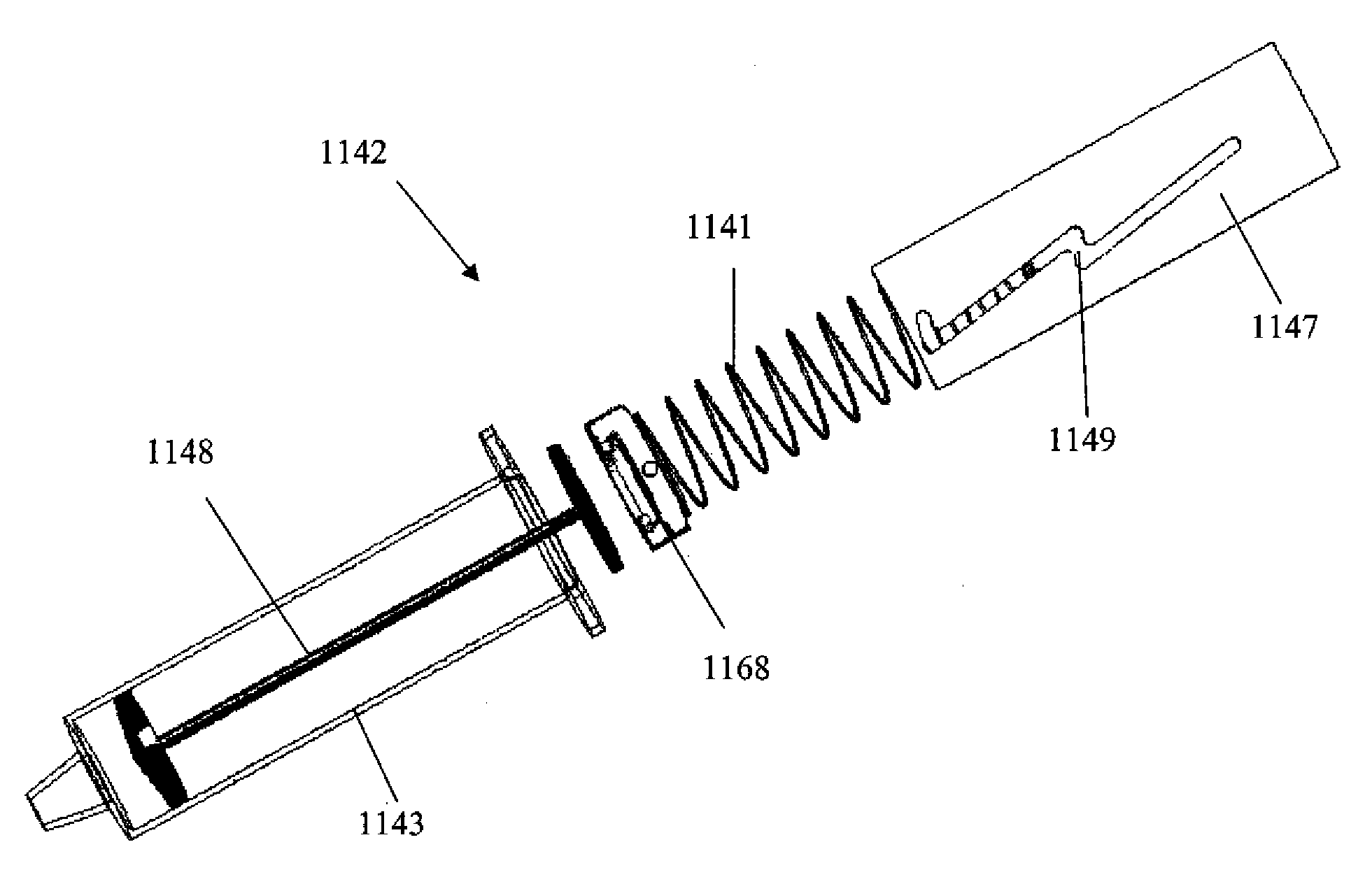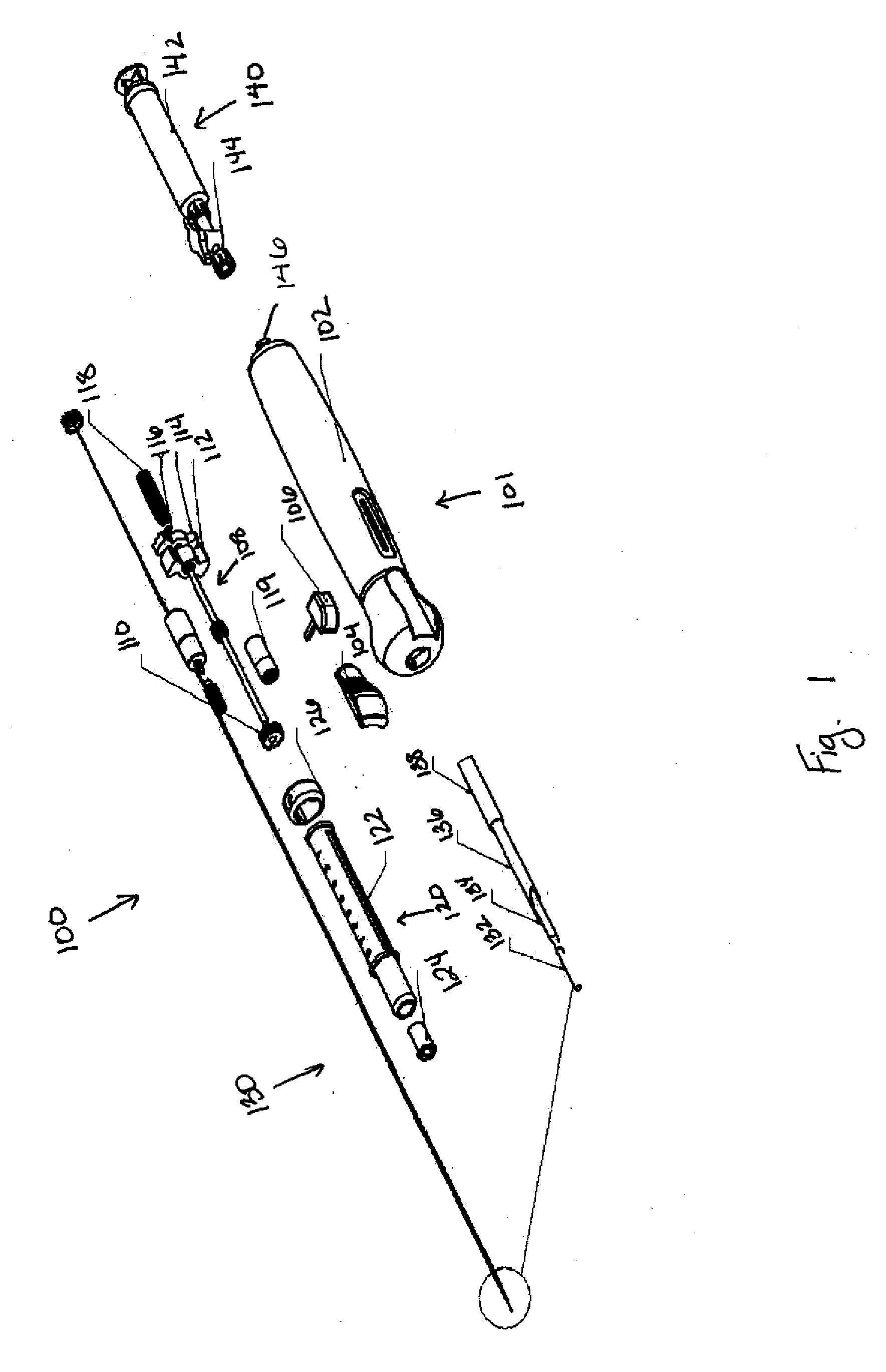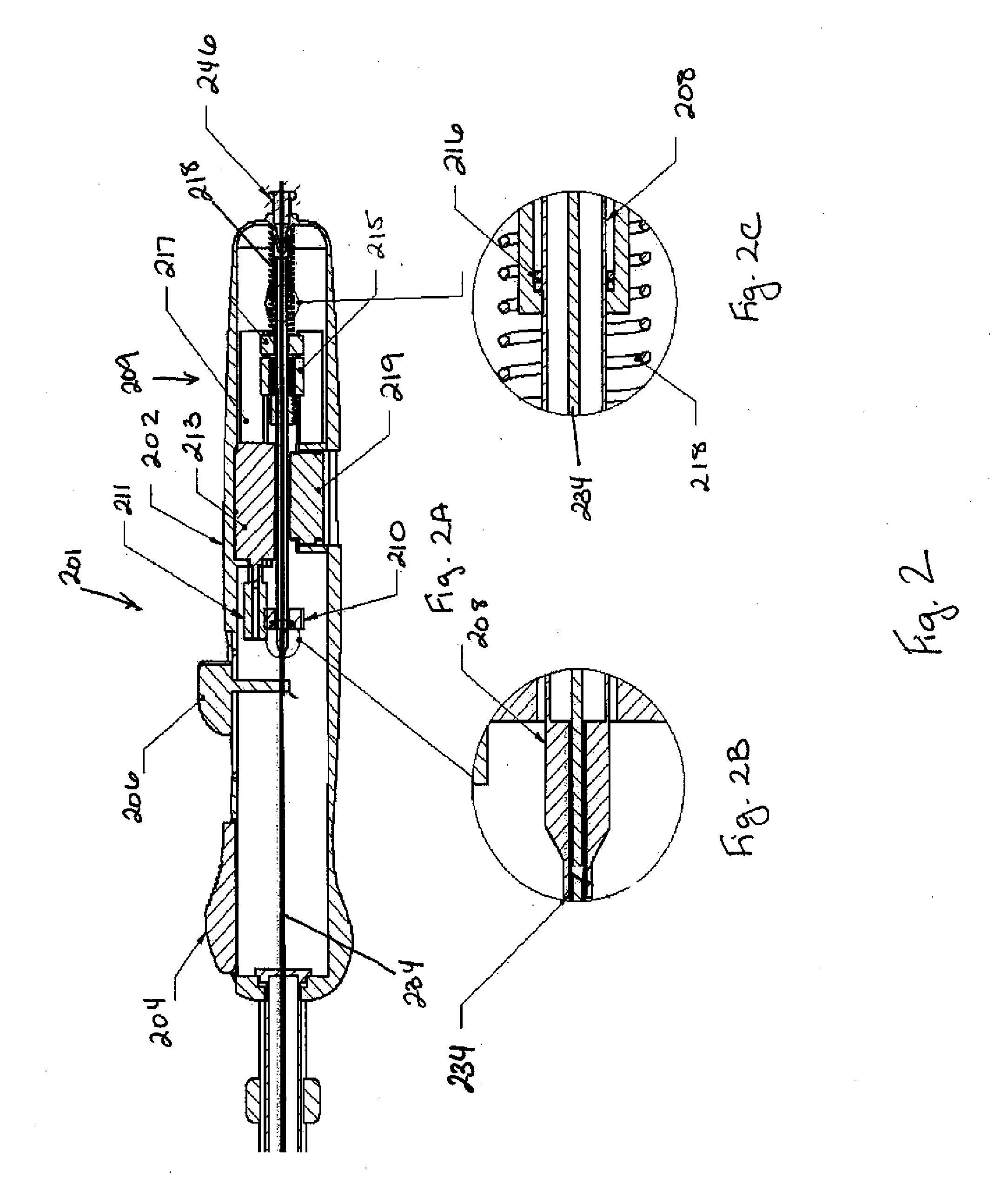Devices, Methods, and Kits for a Biopsy Device
a biopsy device and kit technology, applied in medical science, surgery, vaccination/ovulation diagnostics, etc., can solve the problems of inability to aspirate a sample from a solid mass, inability to apply negative pressure, and inability to further damage the tissue, so as to facilitate the application of negative pressure, facilitate the echogenicity of the outer needle and facilitate the tissue collection element.
- Summary
- Abstract
- Description
- Claims
- Application Information
AI Technical Summary
Benefits of technology
Problems solved by technology
Method used
Image
Examples
Embodiment Construction
[0040]The biopsy devices described herein can be designed to automate the procedure for the diagnosis of suspect areas of tissue. The device can be used with tumors and cysts, or any other suitable soft tissue from which a sample can be obtained. Various embodiments of the device are provided herein. In one embodiment, the device described herein can comprise an outer needle having a distal end, or end closer to the body, and a proximal end, or end closer to the exterior of the body, connected to a drive mechanism and a tissue collection element having a distal end and a proximal end. The distal end of the tissue collection element can be formed from a material having a first constrained configuration when positioned within the outer needle prior to deployment and a second unconstrained configuration when extended distally beyond the distal end of the outer needle, wherein the tissue collection element is translationally and rotationally moveable within the outer needle and distally...
PUM
 Login to View More
Login to View More Abstract
Description
Claims
Application Information
 Login to View More
Login to View More - R&D
- Intellectual Property
- Life Sciences
- Materials
- Tech Scout
- Unparalleled Data Quality
- Higher Quality Content
- 60% Fewer Hallucinations
Browse by: Latest US Patents, China's latest patents, Technical Efficacy Thesaurus, Application Domain, Technology Topic, Popular Technical Reports.
© 2025 PatSnap. All rights reserved.Legal|Privacy policy|Modern Slavery Act Transparency Statement|Sitemap|About US| Contact US: help@patsnap.com



